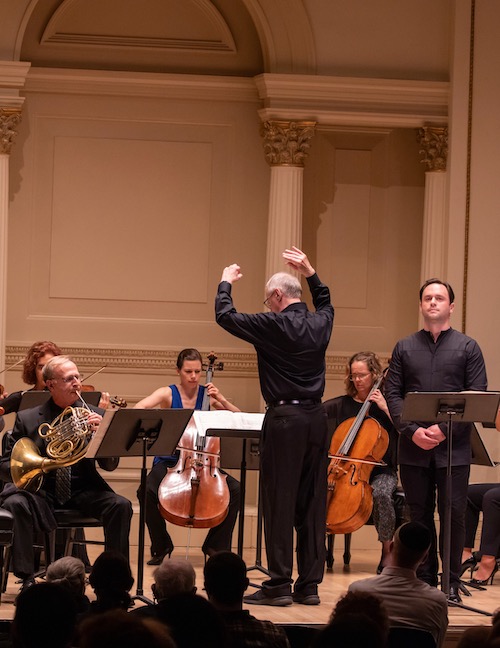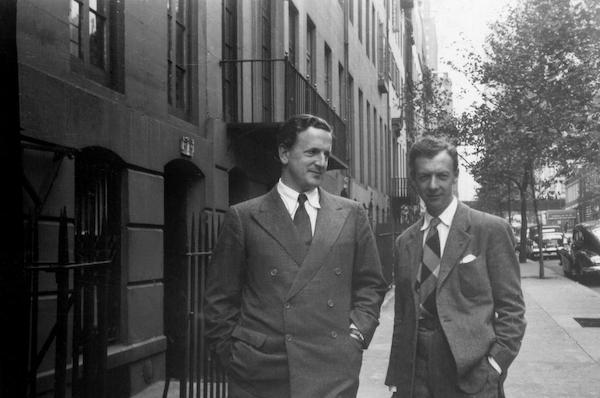Met Orchestra Ensemble offers music by a trio of outsiders

The Met Orchestra Chamber Ensemble opened its 2022-23 season at Weill Recital Hall with an intriguing concert of music by Samuel Coleridge-Taylor, Benjamin Britten, and Dimitri Shostakovich. The works of the latter two composers complemented the Metropolitan Opera’s fall season, with Britten’s Peter Grimes and Shostakovich’s Lady Macbeth of Mstenk in the repertoire. There was a more subtle link to the programming, however, as the three men were all outsiders in societies where conformity mattered.
Of mixed-race parentage, the British composer Coleridge-Taylor, whose father was descended from African-American slaves, came from a musically inclined family and his talents were evident at an early age. A student of Charles Villiers Stanford, Coleridge-Taylor was also championed by Edward Elgar. The composer was embraced by both the musical establishment and the public.
Coleridge-Taylor composed the Nonet in F Minor in 1893 when he was 18 years old. The young composer’s admiration for Brahms and Dvořák is evident throughout the work, but this music feels particularly British due to the bucolic melodies that coursed through it as well as the optimism and confidence with which it was performed. The Met musicians seemed to be summoning all of the grandeur of Empire at its zenith, along with glories of the English countryside on a fair June day.
Britten was a pacifist in a country preparing for war, who in 1939 moved from England to the United States along with his partner and muse Peter Pears. The Phantasy for Oboe Quartet is also a youthful work, composed when Britten was 19 and a student at the Royal College of Music. Britten was disdainful of the school’s faculty and they were equally dismayed by the music that he composed. A BBC radio broadcast in 1933 of the Phantasy with oboist Léon Goossens, a preeminent English oboist of the time, helped to establish the young composer, as well as point to the future of British music.
If Coleridge-Taylor’s Nonet overflowed with optimism, this performance of the Phantasy was remarkable for its swagger. Met principal oboist Nathan Hughes played with virtuosity, impeccable musicianship and beautiful tone. Britten lamented that Goossens played his part splendidly for the BBC broadcast, but that the other instrumentalist weren’t quite up to snuff. There were no such qualms on this occasion, especially with the Met Orchestra’s concertmaster Benjamin Bowman and principal violist Milan Milisavljević on stage. This was a thrilling performance that celebrated Britten as a young iconoclast.
For those whose tastes run towards the more pastoral Britten, that was provided by the composer’s Serenade for Tenor, Horn, and Strings. Britten and Pears returned to England in 1942 and a year later he composed the Serenade for Pears and the superb hornist Dennis Brain. The work consists of settings of six English poems and is framed by a horn prologue and epilogue. This performance was expertly led by Gareth Morell, who joined the Met’s conducting staff in 1995.
Pear’s voice was famously described as being of “modest decibels and limited color”. He did, however, have immaculate diction and penetrating communicative skills. Tenor Paul Appleby has the latter abilities, but is also gifted with a lyric tenor that is youthful, fresh, and gleaming. In “Pastoral” and “Hymn,” Appleby was a troubadour of yore with his sense of playfulness and ease of singing. Each repetition of “Blow, bugle, blow, set the wild echoes flying” in Britten’s setting of Tennyson’s “Nocturne” was a penetrating study in shading and vocal color. “Dirge” found the tenor at his most dramatic, as he sang with near-overwhelming force and ferocity.
Erik Ralske’s flawless playing of the prologue on the natural horn provided a mystical setting to the work. Switching to the modern-day French horn, he was centerstage in the songs “Pastoral” and “Elegy,” before joining Appleby as an equal partner in the Britten’s dizzying setting of Ben Jonson’s “Hymn,” dedicated to Diana, Goddess of the Hunt. Throughout, Ralske’s playing was marked by molten tone and flawless technique. He was offstage to play the epilogue, again on the natural horn, which in Pears’s words, “winds the work into stillness”.
The final work on the program was Shostakovich’s Two Pieces for String Octet which he began in 1924 and completed the following year.
Consisting of a Prelude and Scherzo, the work bears the stamp of a young man pushing boundaries and buttons. The first movement is primarily lyrical, but afforded violinist Miran Kim the opportunity to shine in some virtuosic flights of the composer’s fancy. The second movement, however, is edgy, fast, and furious with Milisavljević again the engine propelling the performance forward.
The Met Orchestra Chamber Ensemble returns to Weill Recital Hall with a program of Brahms, Dvořák and Villa-Lobos on December 12. carnegiehall.org
